On March 28th, the 198th day of our cruising trip, we began another first – the journey north by boat. We have covered these miles twice before but only in the southward direction, so Day 198 was also Day 1 of the return home. We planned on covering the distance between Vero Beach and St. Augustine in four days, traveling with our buddies Dan and Marcia on Cutting Class. We covered 32- 47 nautical miles each day, traveling for 5 to 6.5 hours. We are easing back into the longer traveling days.
Since this is the third time on this stretch of the ICW, I really don’t have much in the way of amazing photos or stories, just a journal of this section. The older blogs have much more in the way of information and good photos. Links = 2013 and 2015. It’s getting difficult to find new things to write about or photograph.
The first day was an overcast, warm and humid day so even the Florida sunshine wasn’t there to accompany us.
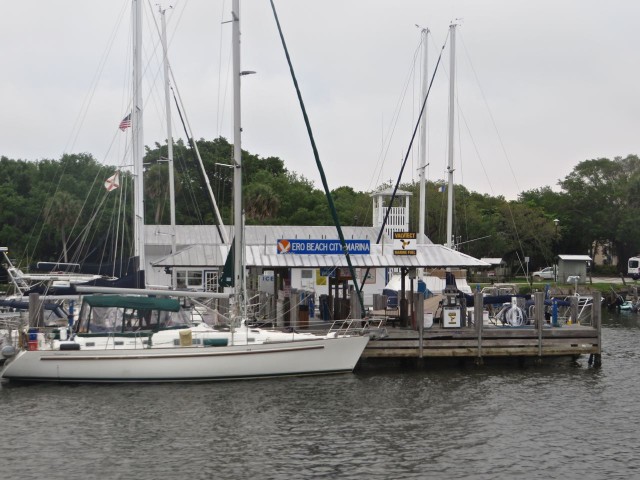
We said goodbye to Vero Beach City Marina but stopped just a few miles north at Loggerhead Marina where the fuel was less expensive.
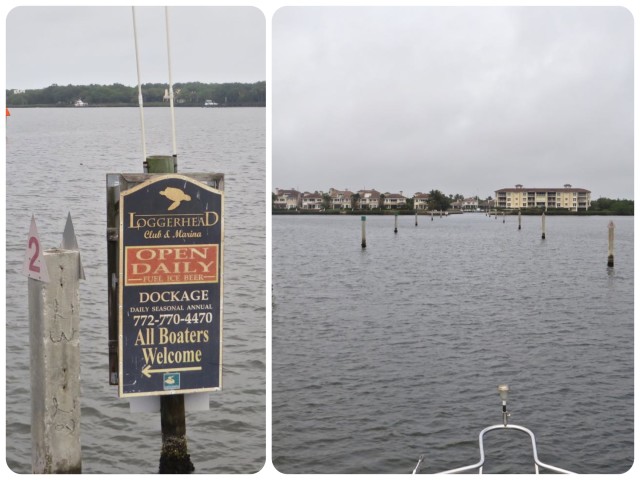
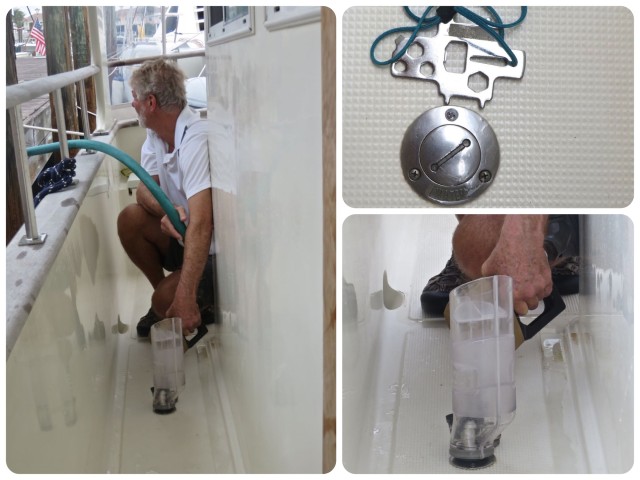
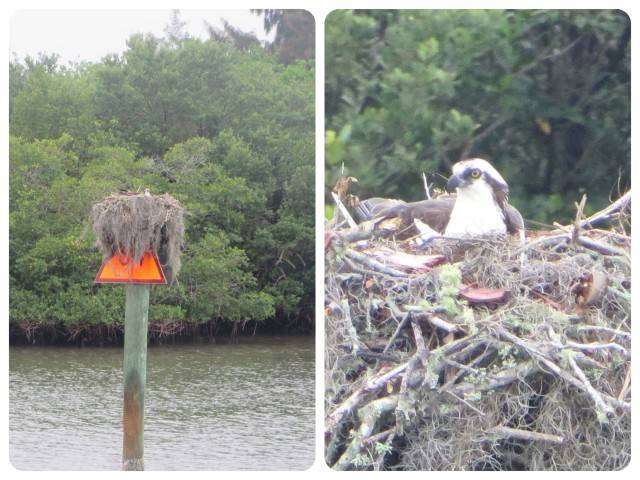



We kept an eye on the threatening thunderstorms by checking the weather apps on my iphone. At one point Al could see the storm clouds moving from the west and decided to slow down, circling around and double back so that the storms would pass by miles ahead of us.
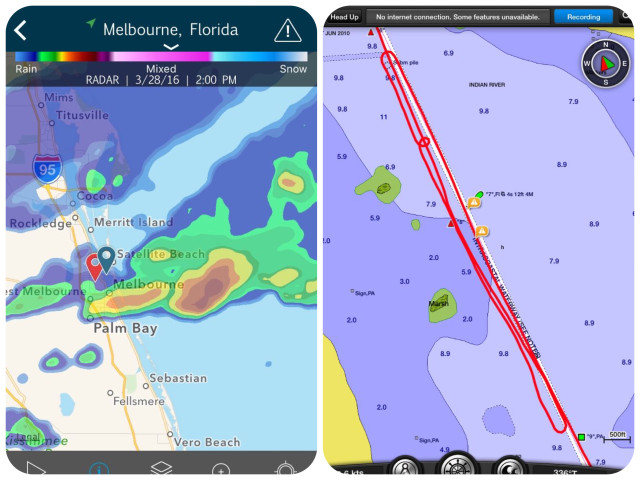
Our day ended with the anchor down at Eau Gallie in Melbourne with Cutting Class. Short naps revived us all enough to celebrate our first day of the northward trip with happy hour beers at Squid Lips, a waterfront bar.
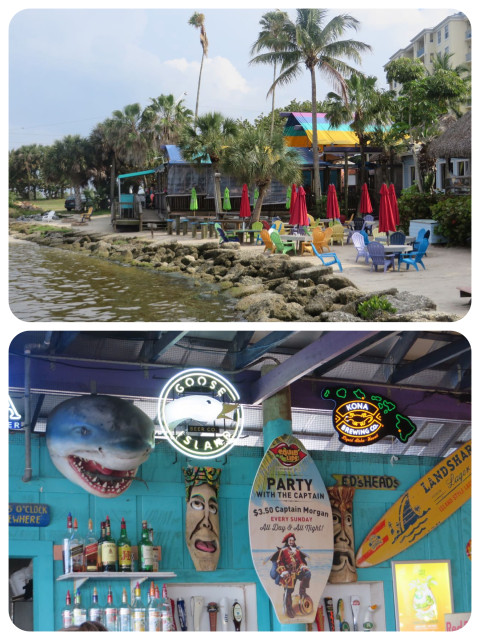
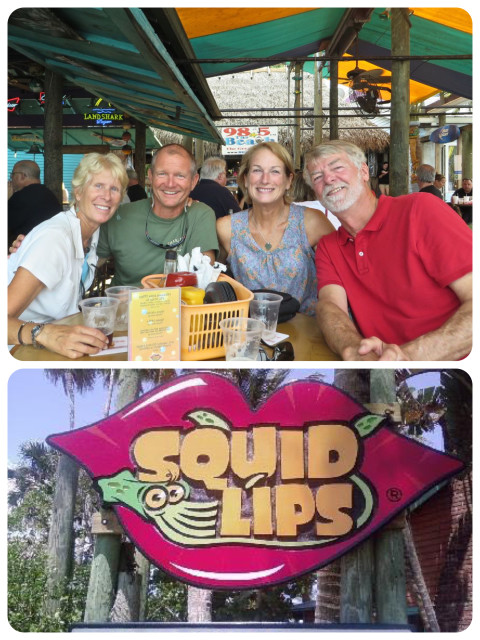
Our second day began with a lovely sunrise over Melbourne. Our goal was to reach Titusville today.
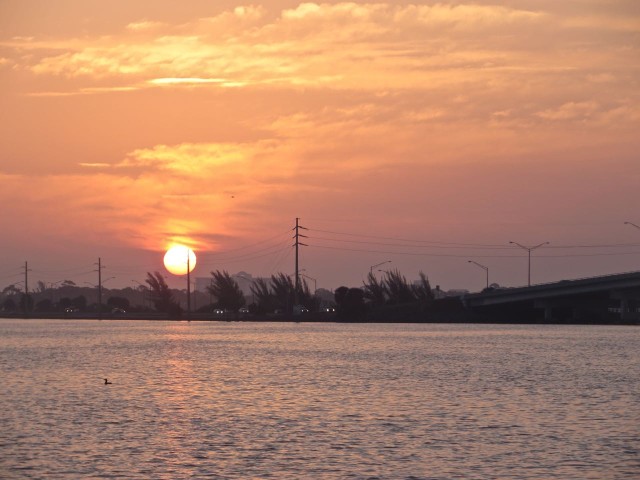
Both boats were ready to pull up anchor, when Al got a call from Dan. Cutting Class’s engine wouldn’t turn over. Nada. Uh oh.
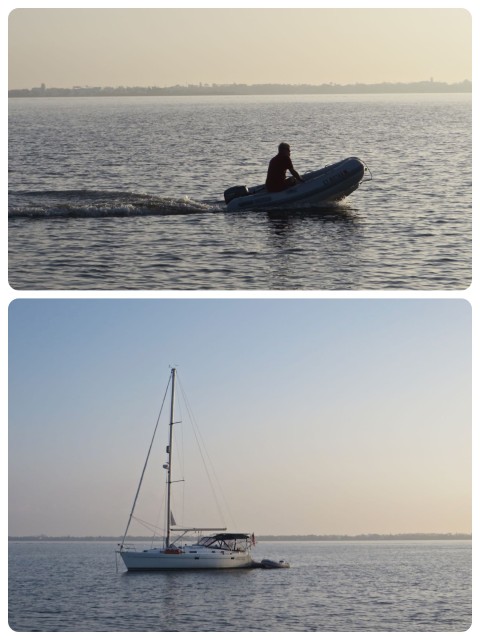
On the ICW, boats travel at different speeds (duh). We have been the slower sailboat and had powerboats pass us, and we are now a trawler who still gets passed by much faster motor vessels. On the other hand, both our sailboat and this trawler often move faster than other boats on the ICW so we do the passing, too. This is called the “slow pass.” How does it work? Usually, the boat that wants to pass hails the slower boat ahead on the VHF (Note– that only works when boaters have their VHF turned on. We are continually surprised by the boats who don’t. We keep ours on at all times when underway. Seems obvious to me.) It is much better when you are able to call the boat by name, which means it should be visible, whether on its transom (not covered by the hanging dinghy) or on another higher board that is easier to see. As the overtaking faster boat, you slow your speed just as your bow reaches the rear of the boat ahead. At that time, the slower boat should also slow down to 3-4 knots (if they don’t, it forces the overtaking boat to move faster in order to get by which defeats the whole purpose of the slow pass.) When done right, the slow pass serves its purpose which is not to throw a wake that bounces the slower boat from side to side. It only takes a minute to complete a slow pass, but some fast boats just won’t bother. If they do throw a big wake, your only option is to turn into the wake quickly and ride over it into a trough and behind the boat that passed. As long as no one is behind you. On any given day we take our turn as the passer and the passee. We know what it feels like to get rocked by the rude boats, so we do try to be courteous and thank the boats we pass and who pass us when the “slow pass dance” is over.
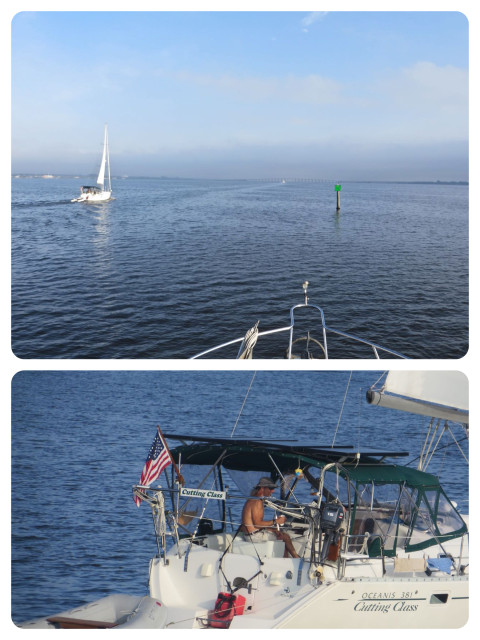
This was another semi-overcast humid day with some rain and some sun. A little bit of everything. Including more birds and more abandoned boats.

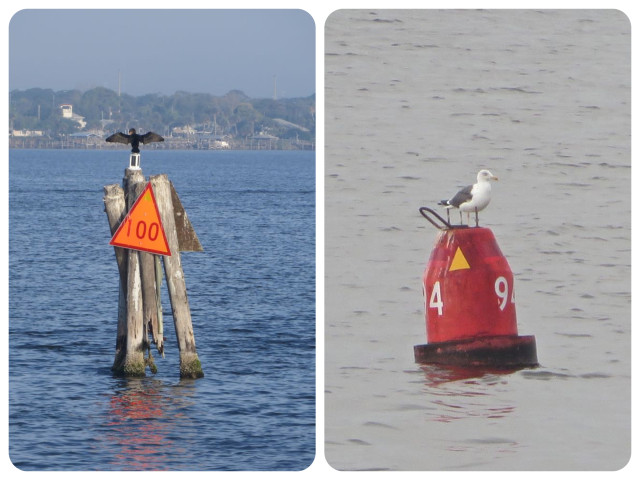

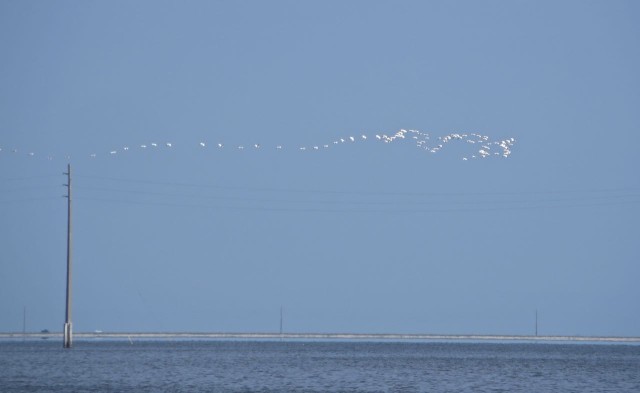
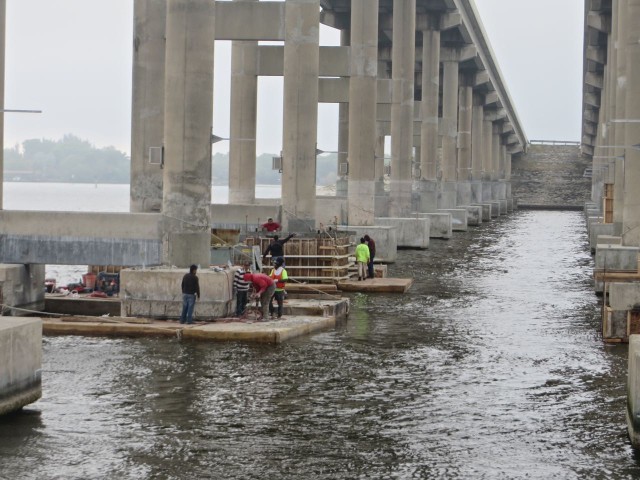
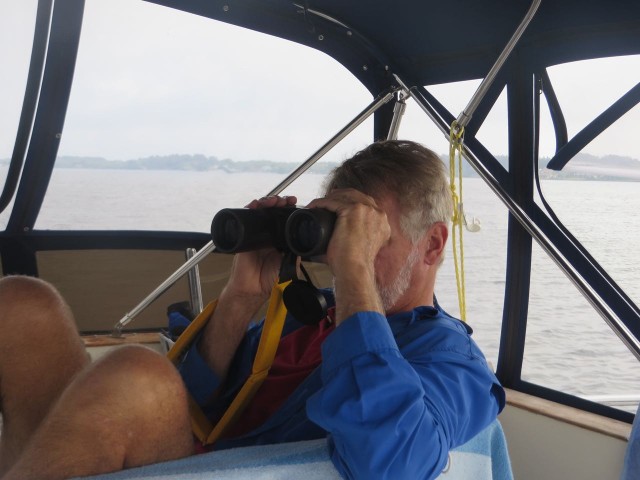
The binoculars are useful to check the height boards on the lower bridges – can we go under or do we wait for an opening? Sometimes I think it was easier when there was no question and we had to wait.

Just past noon, after lunch, we were moving along, nothing much happening. And then, the engine lost power and simply slowed to a stop. Uh oh. Oh no. What happened???? This is never a good thing. We went into “check everything” mode, me at the helm and Al doing the checking. It would have been foolish to reverse those roles – we would still be floundering. The next picture shows the cause and solution.
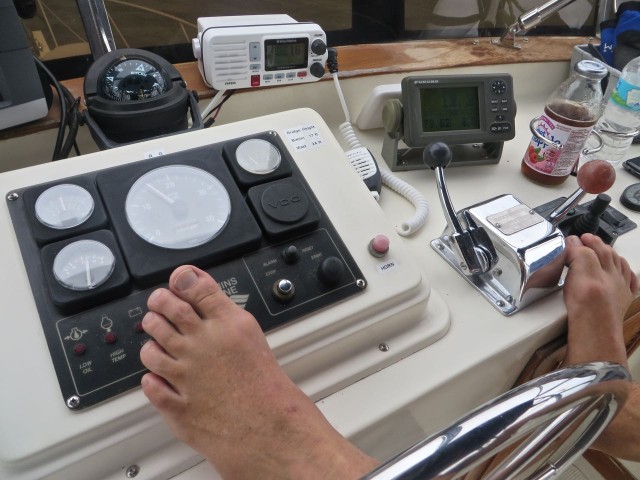
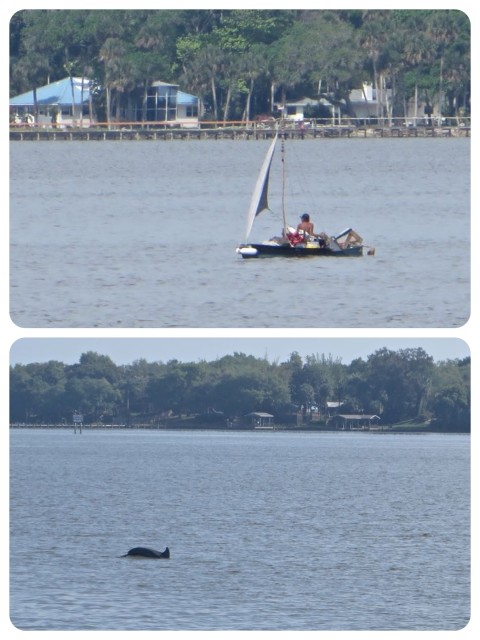
This was an unusual little boat — sailing canoe with a large load.
We anchored at Titusville, but the threat of rains and thunder kept us on our boats for the evening. It was just another day of boats, birds, and bridges. However, we did pass the 2,000 nautical mile mark of our cruising since September 13, 2015.
The third day took us from Titusville to Daytona, Cutting Class and Kindred Spirit both behaved well with no more “mishaps.”
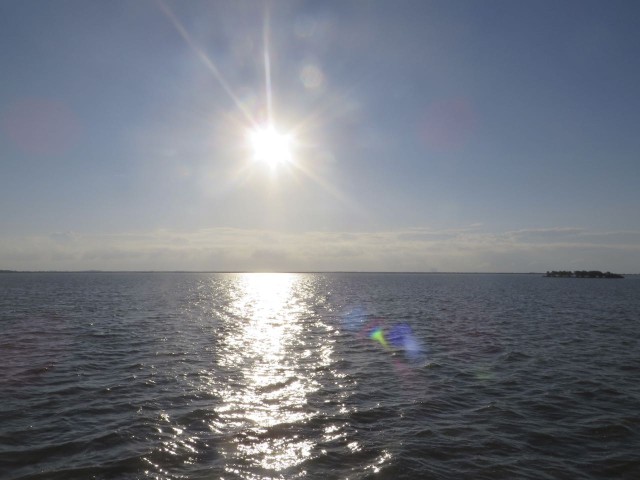
We remarked that this was the 200th day since we left Connecticut last September, and recorded it with a selfie.

Today I photographed some of the many spoil islands that rim the ICW. The spoil islands we passed today were mostly tiny ones without any “action.”

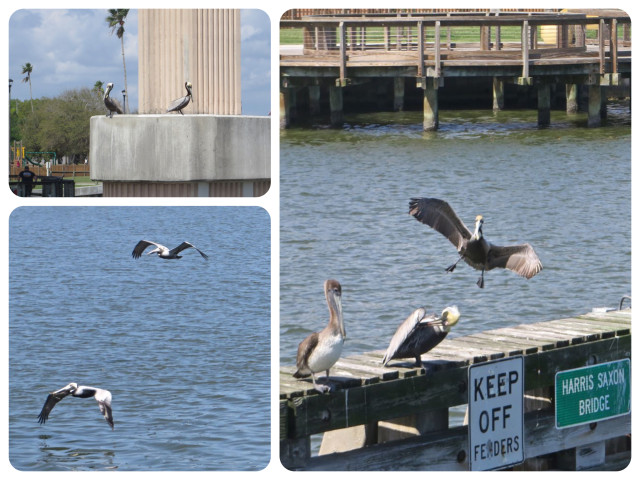
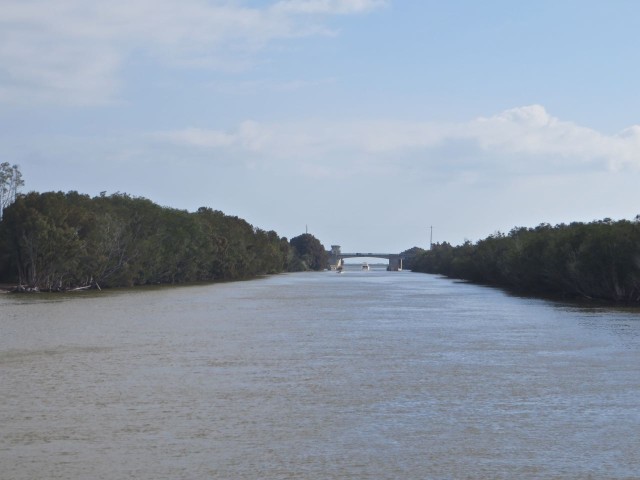
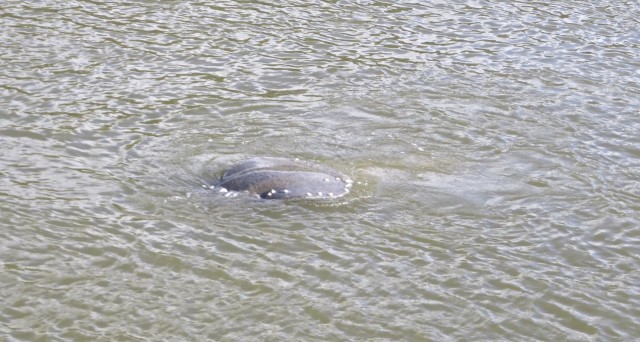
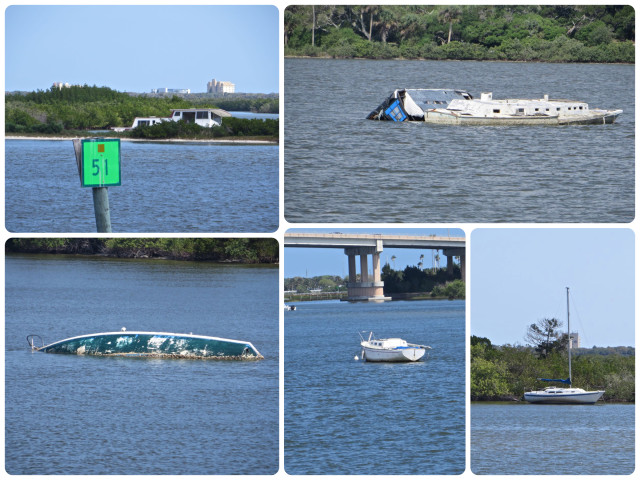
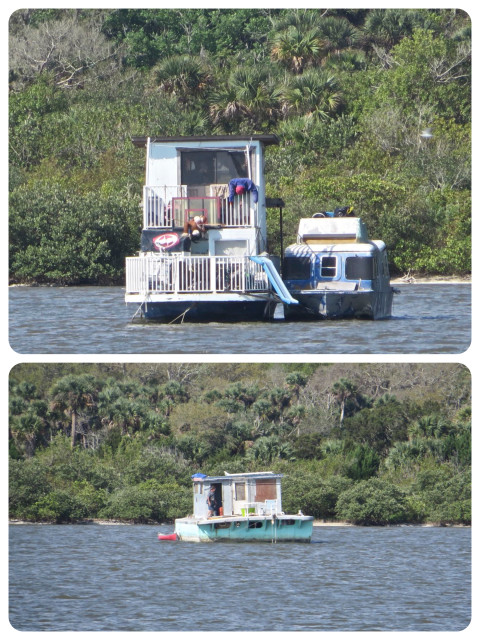
As we reflect on our trips up and down the Florida ICW we commented on how it wanders through such a variety of regions, both natural and civilized. The civilized sections can be rich, poorer, and everything in-between. developed and underdeveloped. The natural regions cover abundant vegetation and much wildlife, deep and shallow waters, wide and narrow waterways.

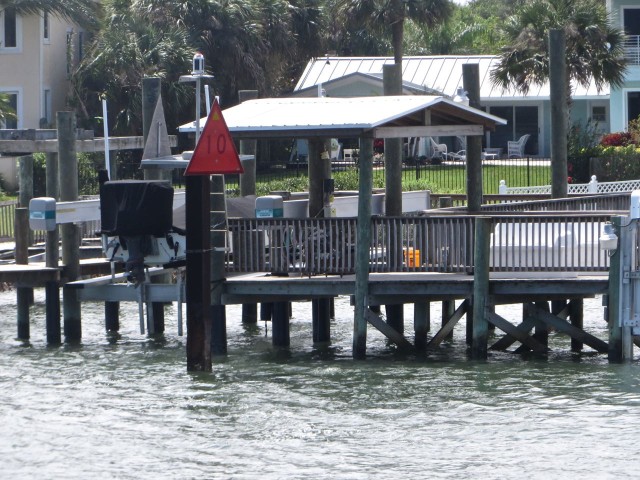
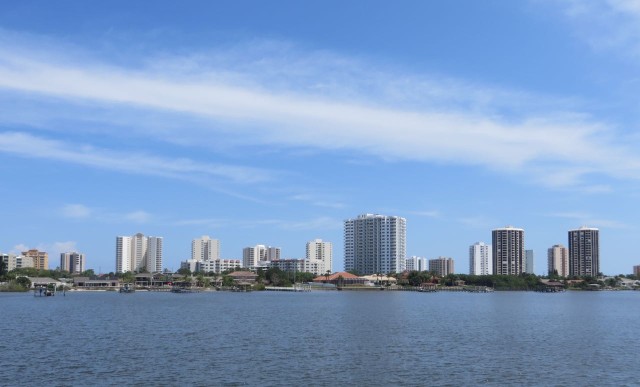
Last day – Daytona to St. Augustine
The 47 nautical miles from Daytona to St. Augustine went by more quickly than we anticipated because we often had the current with us. We have learned that you can’t consistently plan around the currents on the ICW. On a long day, it will be with you and against you, depending on the timing and what inlets you travel through. We were lucky today.
Bridges and more bridges. Florida must have a record for the most bridges of any water way. It is a long state and beach lovers have to get out to those barrier islands and beaches somehow.
Over these four days, we passed under fifteen 65-foot high bridges and went through 7 bascule or swing bridges.
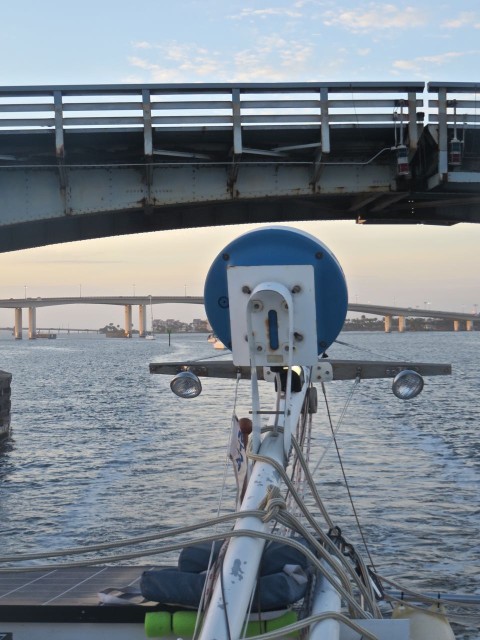
Ironically, our timing was such that we reached two of the bridges while it was opening for taller boats.
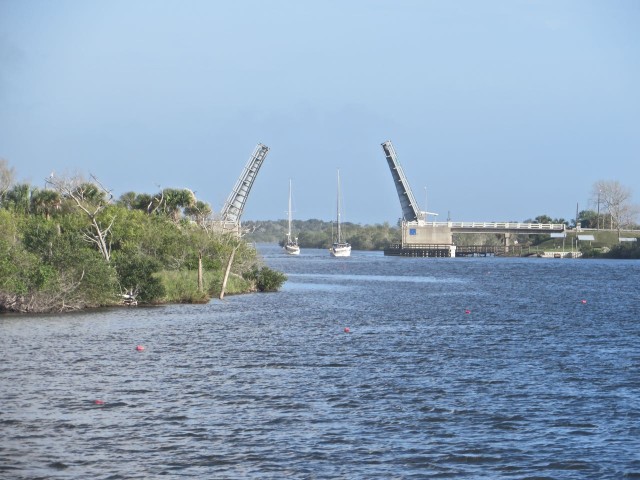
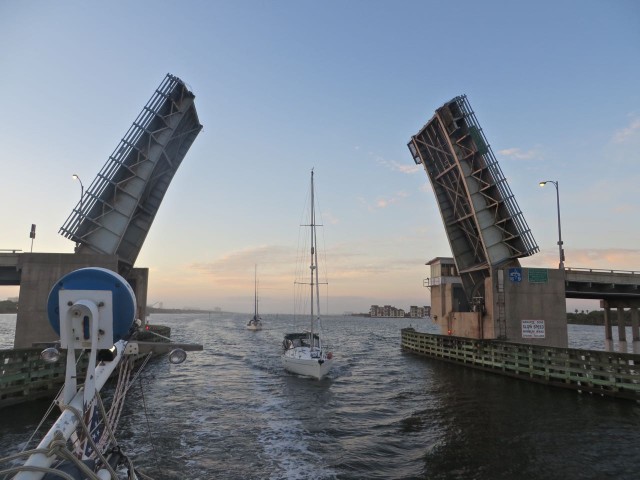
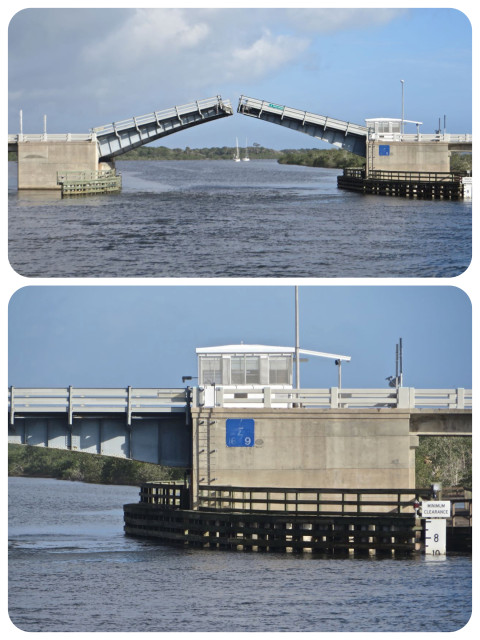
More abandoned boats……………
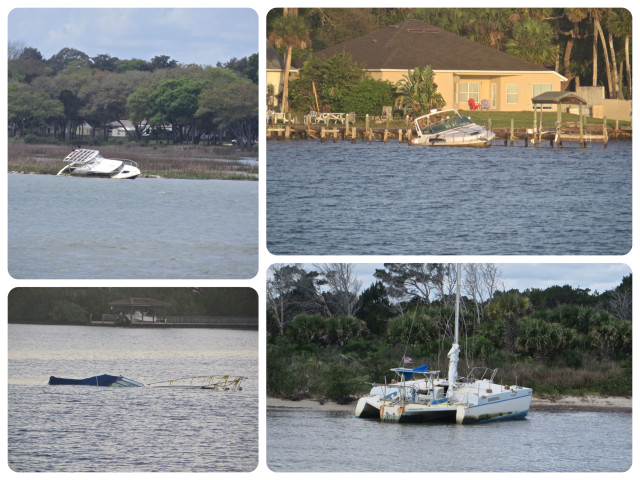
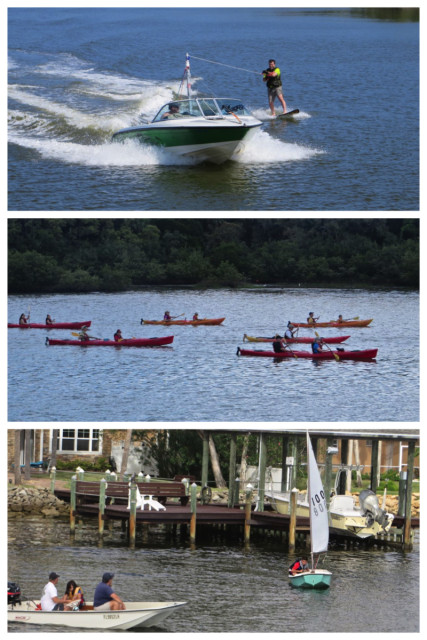

Four days of travel, 156 nautical miles (23 hours) we arrived in St. Augustine, our third visit here.

Although the mooring we were assigned was in the very last row and far from the marina, it was nice to such a good view of the St. Augustine Lighthouse. St. Augustine Light, built in 1874, is an active light and a museum. It’s on my list to visit someday. For this visit, I could only look at it from afar. The striping reminded me of the candy-stripe light in Hope Town.
Time for a resting day.
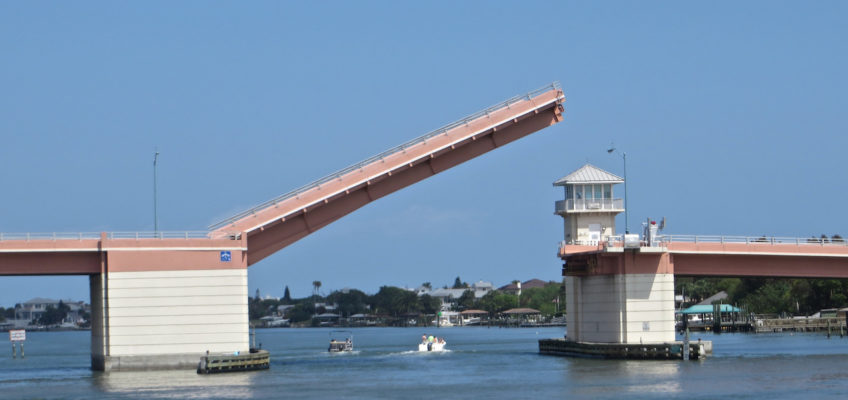
Leave a Reply